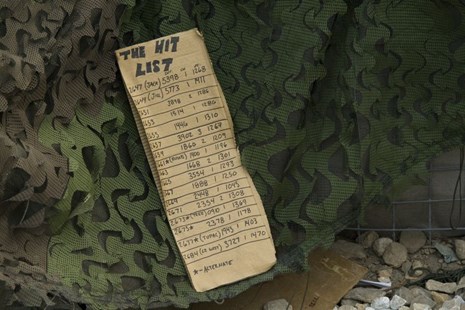Jonas Dovydėnas: 11 Trips to Afghanistan

Jonas Dovydėnas
11 trips to Afghanistan
In 1979 the Soviet Union brought its army into Afghanistan to
support a government of pro-communist insurgents. This is how the
first war between Afghanistan and the Soviet Union started. The
opposition forces of the time - Muslim guerrillas or Mojaheds -
were supported by the West and wealthy Arab countries. Although the
Soviet Union lost the war and withdrew its forces in 1989, peace
was not restored. Afghanistan has since become a crossroads of
wars, upheavals and political power struggles. Great powers of the
world, such as the Soviet Union, the USA, Saudi Arabia, Iran and
Pakistan often supported Afghanistan's internal struggles in order
to reinforce their own political interests. Meanwhile, the weak
governments erected in the country have failed to establish a
functioning state: parliament, courts, police and army have never
served as pillars of support for the country. Following the war
with the Soviet Union, Islam remained the single force of unity for
the country's tribes and ethnic groups. This circumstance
significantly enforced the Islamic influence upon social policies.
In the 1990s the formation of the political-religious organisation,
known as the Taliban, began in religious schools located in the
mountains of Pakistan. The strengthening of this organisation
condemned Afghanistan to cruel and long lasting internal struggles,
turning the country into a source of Islamic terrorism. After the
tragic terrorist attacks in the USA on 11 September 2001,
Afghanistan again became a centre of concern for the international
community. The United Nations Council sent international
peacekeepers to support governmental forces and ensure the
protection of civil populations. Since 2002, Lithuanian troops have
also participated in international operations there.
In 1985, a Lithuanian-born American photographer Jonas Dovydėnas visited Afghanistan for the first time, finding a country exhausted by wars, political struggle and chaos. The photographer claimed to have seen parallels between Afghanistan's war with the Soviet Union and the post-war Lithuanian guerrilla resistance movement. This attitude corresponds with the origins of the photographer. The story of Dovydėnas and his family is a typical one for World War II: in 1944, as the front and Soviet army were drawing closer, the photographer's father, famous interwar writer Liudas Dovydėnas together with his family fled to the West. Dovydėnas family spent five years in refugee camps in Western Germany, where Jonas started school, until the family moved to the USA in 1949. Like many Lithuanian emigrants in the USA, the young Dovydėnas developed an idealistic attitude towards his home country and now unconditionally supports the idea of free Lithuania. It is, therefore, easy to understand why the photographer saw the struggle of the culturally distant people of Afghanistan, against the Soviet Union, as resembling the post war Lithuanian guerrilla movement.
The photographer's experience in Afghanistan extended over more
than 20 years - he visited the country nearly 11 times - and it has
become an important part of his creative legacy. The
chronologically arranged photographs presented at the exhibition
offer only a fraction of this extensive archive.
Dovydėnas is a representative of the 20th century American
photography school. His teachers include such remarkable figures of
US photography as Harry Callahan and Aaron Siskind. Given his
background, when he came to Afghanistan for the first time he was
already an experienced freelance photographer. Thus, both the
American school and the photographer's personal skills have
influenced his visual narrative about this country. Further, there
is little politics in Dovydėnas' photographs: his images tell a
story of the country's people, to whom the war has become part of
everyday life. War is not restricted to fighters planning an attack
on an enemy in the mountains - it also includes the street markets,
children at school, ordinary people travelling, preparing meals,
gathering for feasts or neighbourly conversations.
Dovydėnas' photographs are a witness to a war that lasted for over 30 years, or, more precisely, they demonstrate the consequences of war, as there are few pictures depicting actual battles. The photographer's attention is drawn to the incurable marks this chaos scars on the bodies and fates of people, as well as on the country's landscape. The work is a photographic narrative presenting the country as seen through the eyes of a Westerner.
Curators: Goda Aksamitauskaitė, Ieva Mazūraitė-Novickienė
Graphic designer Laura Grigaliūnaitė
Organizer National Gallery of Art
This project was partly financed by the Ministry of Culture of the Republic of Lithuania and the Lithuanian Council for Culture
Sponsor Exterus, Imparat


